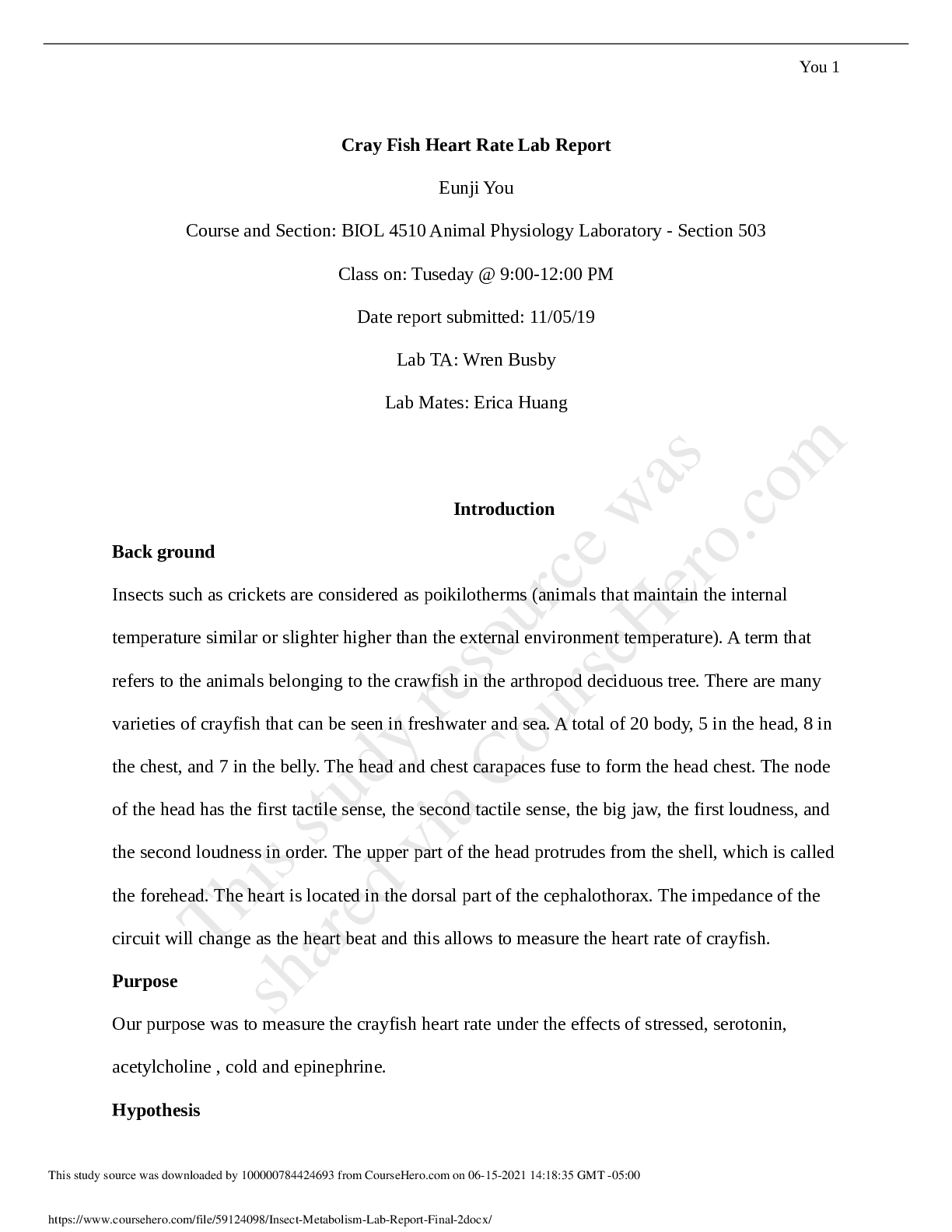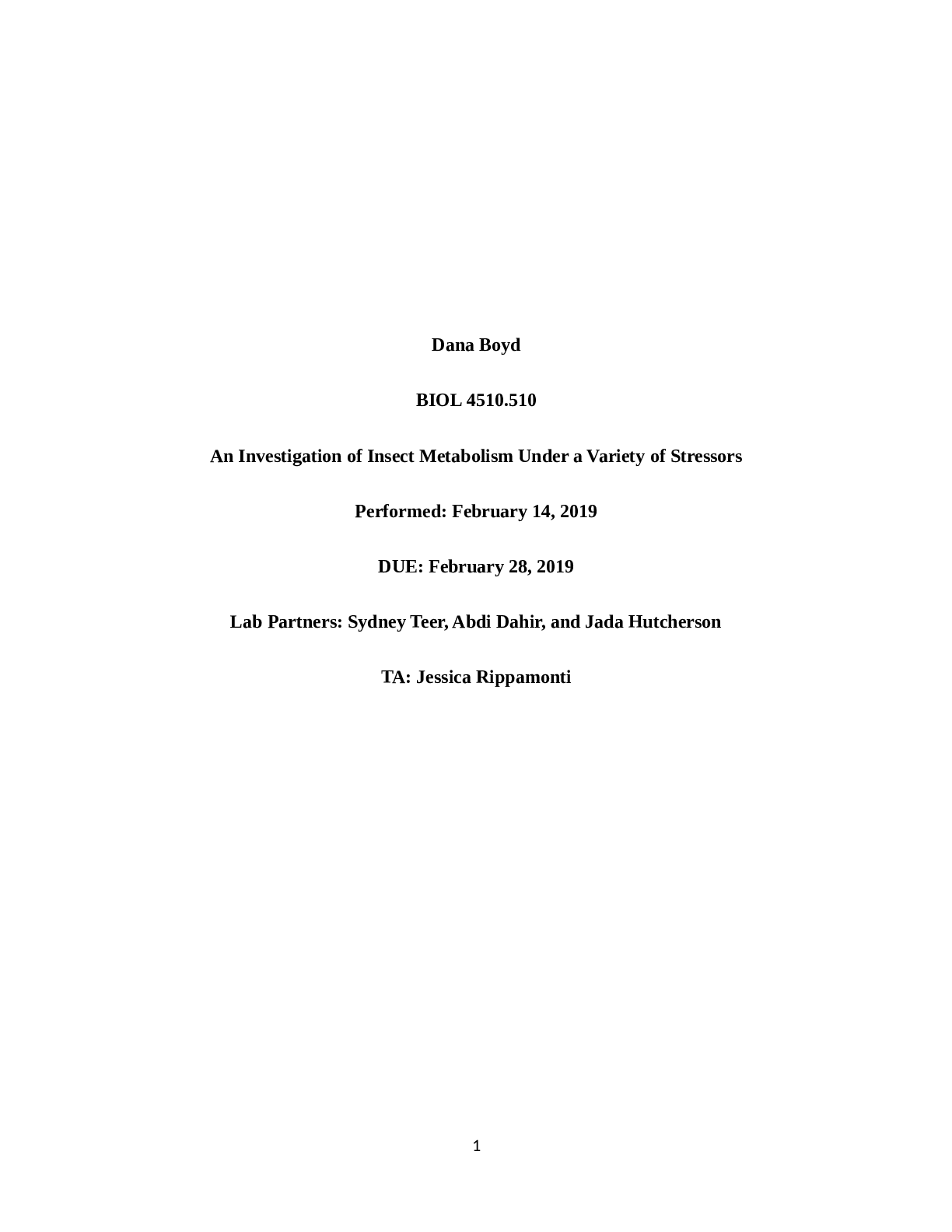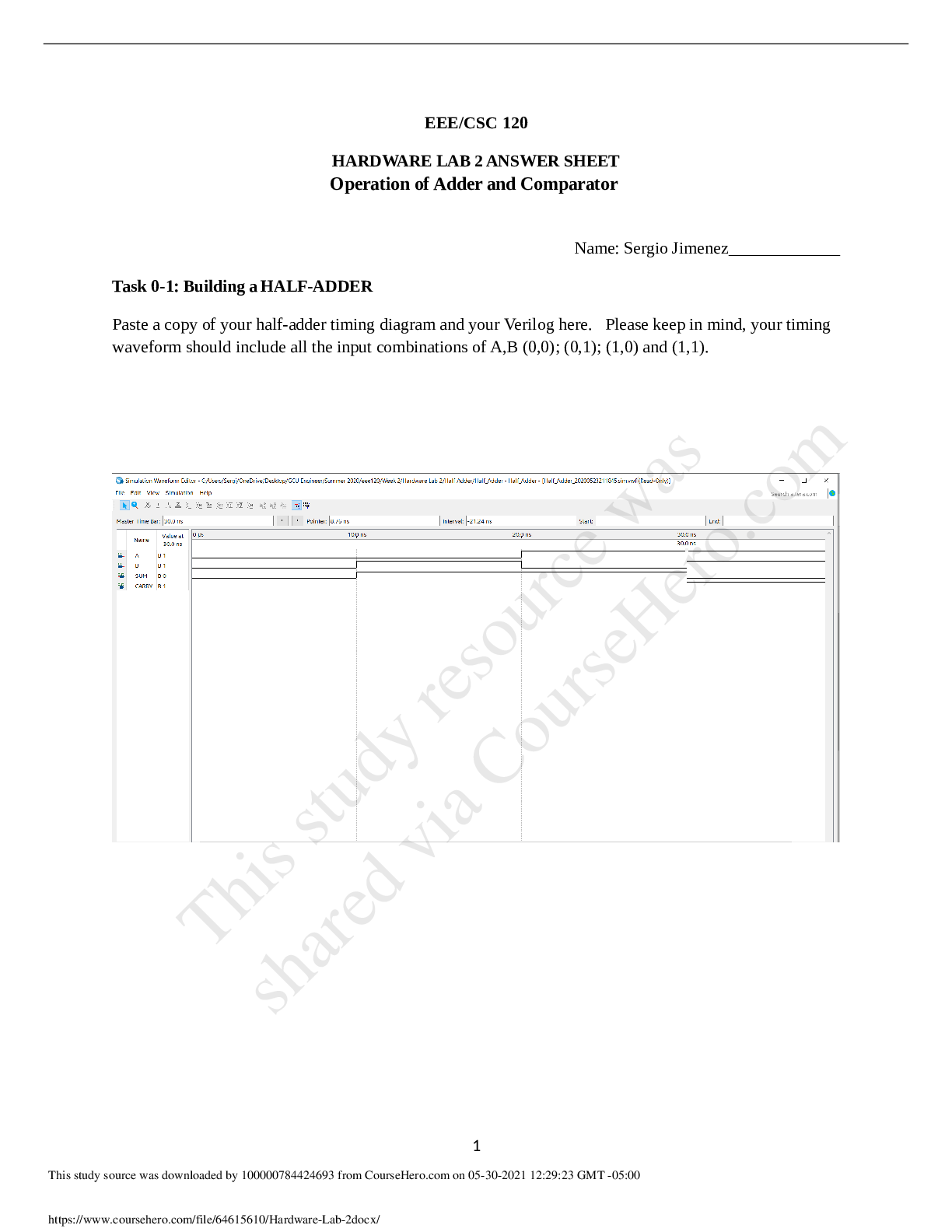Chemistry > Lab Report > Identifying an Unknown Ionic Compound Chemistry 111-477 (All)
Identifying an Unknown Ionic Compound Chemistry 111-477
Document Content and Description Below
Identifying an Unknown Ionic Compound Chemistry 111-477 Introduction Through a series of elimination and confirmation experiments, cations and anions are identified by how they react through dif... ferent chemical reactions. After doing this, an unknown ionic compound can be classified into its specific cation and anion form by comparing its characteristics to the ones found earlier. Materials and Methods The cation elimination test was performed by having five test tubes, each filled with 10 drops of a cation solution: potassium, iron (III), zinc, copper (II), and cobalt (II). Then, 6 M NaOH was added drop wise to each test tube until either a precipitate formed or 10 drops were added. To each test tube in which a precipitate formed, 10 additional drops of NaOH were added. The following steps were then repeated using 15 M NH4OH in place of the NaOH. Each cation was then confirmed with a flame test. (Table 1) For the anion elimination test, five test tubes were filled with 10 drops each of an anion solution: chloride, sulfite, sulfate, nitrate, and carbonate. 0.1 M AgNO3 was added drop wise to each test tube until a precipitate formed or 20 drops were added. Each test tube in which a precipitate formed was centrifuged for five minutes. The supernatants were then decanted and 5 drops of water was added. Dilute HNO3 was added drop wise to the test tubes until the solution became acidic. The test tubes were then again centrifuged. The supernatants were decanted and 5 drops of water was added. 6 M HNO3 was then added drop wise until the solution became acidic. The anion confirmation tests are as followed: The chloride anion was confirmed by acidifying 10 drops of chloride solution with 6 M HNO3 and then adding 0.1 M AgNO3. This mixture was centrifuged and the supernatant was removed. 6 M NH4OH was added to the precipitate and then acidified with 6 M HNO3. The sulfite anion was acidified with 6 M HCl and then two drops of BaCl2 were added. The test tube was centrifuged and the supernatant was transferred to a dry test tube. 0.02 M KMnO4 was added drop wise until the color remained. 2 drops of BaCl2 removed the coloration, confirming the anion was sulfite. The sulfate anion was confirmed by acidifying 10 drops of sulfate solution with 6 M HNO3. 0.1 M BaCl2 was then added until a precipitate formed. 10 drops of 6 M NaOH was added to the nitrate anion and the solution was then transferred to a dry test tube. A cotton ball was then placed at the opening of the test tube, along with a piece of red litmus paper while the solution was heated until the litmus paper turned blue. The carbonate anion was confirmed by adding 3 drops of 6 M H2SO4 to a 0.2663g sample containing carbonate. A drop of Ba(OH)2 was then suspended over the mixture. (Table 2) The identification of our unknown’s cation begu [Show More]
Last updated: 2 years ago
Preview 1 out of 4 pages

Buy this document to get the full access instantly
Instant Download Access after purchase
Buy NowInstant download
We Accept:

Reviews( 0 )
$7.00
Can't find what you want? Try our AI powered Search
Document information
Connected school, study & course
About the document
Uploaded On
May 15, 2021
Number of pages
4
Written in
Additional information
This document has been written for:
Uploaded
May 15, 2021
Downloads
0
Views
61

.png)












